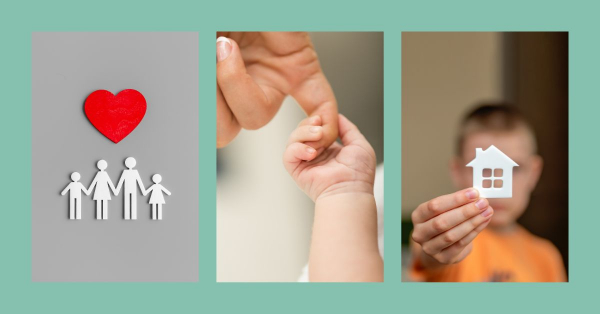Disruption and Dissolution
The terms disruption and dissolution each have specific meanings. However, disruption is often used interchangeably to cover both situations. Both result in a child leaving the family. Disruption is when a child leaves a family before an adoption has been finalized, and dissolution is after finalization.
It is an extremely emotional decision for both the family and the child, and not one to be taken lightly. Do not take a child into your home thinking, If it doesn’t work out, we can just disrupt. The matching process should be done with extreme caution and lots of thought. Every experience a child has can influence their emotional and mental health.
 The Purposes for Disruption and Dissolution
The Purposes for Disruption and Dissolution
That being said, there are times when a disruption or dissolution cannot be prevented and is in the best interest of everyone involved.
Disruption
If you decide not to continue the placement, and the adoption has not been finalized yet, this is a disruption, in the legal sense of the word. The process is significantly different from dissolving an adoption.
In a true disruption, you will notify your case worker that you do not wish to continue the placement. The worker should talk with you to ensure that everything possible was done to preserve the placement. For example, are you being offered all the services and resources your family needs?
Dissolution
In dissolution, there must be court and agency involvement. Do not attempt dissolution without an attorney. Parental rights must terminate, child support may be awarded by the court, and if the child is traveling across state lines for a new placement, the Interstate Compact on the Placement of Children (ICPC) offices must be involved.
Timing
The time frame for moving the child will depend upon the situation in your home. If personal safety is a consideration, every effort will be made to remove the child as soon as possible. Ideally, the child will not move until another pre-adoptive placement is found. Depending on the situation, this may not be possible, and the child will be placed in foster care.
Be Humble and Honest about the Disruption
When the child moves, please be honest with the new family. Do not downplay any behaviors you experienced or hide any conflicts that took place. The more prepared the new family is, the better the chances are of a successful placement. Do not feel that any detail is too small.
Whether or not you maintain contact with the child following his or her removal will be up to the new family. Each family differs in their comfort level. Some may feel that continued contact is important. Others may feel it is too confusing for the child. Some families are happy with photos or written updates. These are details that you will need to work out.
Preparing a Child for Disruption
In the case of a dissolution or disruption, your child’s feelings will be much the same as when he or she entered your home. He or she will likely be scared, uncertain, hesitant, angry, sad, and confused. You may choose to address these issues, and the disruption itself, in therapy or together as a family.
Do not focus on the child’s behaviors or blame him or her for the disruption. Your child is in a very fragile place and his or her feelings need to be taken into the deepest consideration. Wording such as, “We need to do what is best for you,” may help the child understand that the change is in his or her best interest. The child deserves to know it’s being done out of love.
Packing
Help your child to pack his or her clothes. Do not ever put a child’s belongings into trash bags. This sends a message that the child and his or her belongings are trash. It may seem like a minor thing, but for children who have already been through numerous moves, this may have happened to them frequently. If need be, go to a thrift store and purchase some inexpensive luggage or nice containers to put toys and other belongings in.
Use this time packing to talk to your child, and express how much you love and desire happiness for him or her. You could even bring up the sad feelings you have about the disruption, or you could list what you love about him or her. If you’re folding his or her favorite shirt, tell how it makes you feel to see him or her in it. Permit your child to love his or her new family. Validate all feelings.
Remembering
Gather photos, life books, scrapbooks, video tapes, or anything else that might have sentimental value to your child. Package these to send along with the child, either through the social worker or by giving them to the new family. Make copies if you want them for yourself as well.
The Grieving Process
Whether the disruption was your decision or the child was returned to birth parents, there are naturally going to be many emotions involved. This child was a part of your life and family. Expecting yourself to not mourn the loss of this child is unrealistic. It can be just as devastating as the loss of a biological child.
Most parents go through the stages of grief that you would experience with death. There may also be feelings of failure, guilt, or relief; many times parents may even feel tremendous guilt about feeling relieved. The stress that your family has experienced is very real. It is normal to feel relief when stress passes.
Either way, the healing process will be long. Do not pressure yourself to heal from it quickly.
Are you considering placing a child for adoption? Do you want more choices with your adoption plan? Do you want to regain more control in your life? Visit Adoption.org or call 1-800-ADOPT-98. We can help you put together an adoption plan that best meets your needs.







